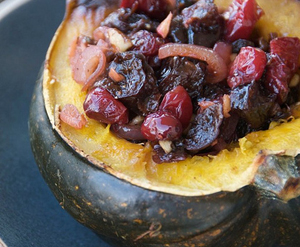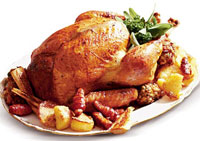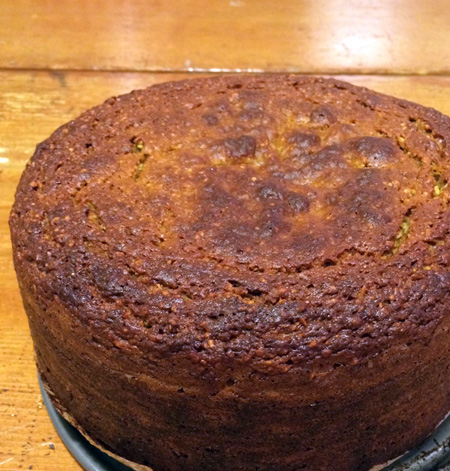 It's already in full swing. Thanksgiving turkey mania. You know what I'm talking about. The endless, frenzied debate over how to cook the perfect turkey. With all the food magazines, cooking shows and turkey hotlines available, I know you'll find more information than you ever wanted on the bird. That's why I'm posting about Thanksgiving side dishes: They're much less controversial. You can't brine sweet potatoes or deep fry cranberry sauce. At least, I don't think you can.
It's already in full swing. Thanksgiving turkey mania. You know what I'm talking about. The endless, frenzied debate over how to cook the perfect turkey. With all the food magazines, cooking shows and turkey hotlines available, I know you'll find more information than you ever wanted on the bird. That's why I'm posting about Thanksgiving side dishes: They're much less controversial. You can't brine sweet potatoes or deep fry cranberry sauce. At least, I don't think you can.
Last year I shared four Thanksgiving side dishes with a twist: Perennial favorites like sweet potatoes and string beans got a makeover. They looked fabulous. But we can't make the same veggies this year. Well, except for the String Beans with Prosciutto, Pine Nuts, and Lemon. I have to make those again. Don't worry though. I've got a few new ones for you that won't disappoint.
Let's start with Festive Stuffed Acorn Squash. A robustly sweet and tangy filling of shallots, cranberries, prunes and pecans is nestled inside of a hot roasted acorn squash half. If you've just wrinkled your nose at the word "prunes," trust me, they're the ideal foil to tart cranberries. But if you just can't abide the thought of them, swap them for sweet Medjool dates. Everyone loves Medjool dates.

 Ever since Jeff and I moved to Southern California seven years ago, my parents have flown from Rhode Island to celebrate Thanksgiving with us.
Ever since Jeff and I moved to Southern California seven years ago, my parents have flown from Rhode Island to celebrate Thanksgiving with us. My grandfather and several of my great uncles had a fur store in N.Y. It was called Windsor Furs (to indicate, one can only guess, a regal presence previously unknown to 14th Street and 7th Avenue). Uncle Simon and Uncle Harry kept Windsor Furs well into their 90’s. And I would like to tell you all the funny, memorable stories I know about them and the shop. But the thing that springs to mind at this moment is their business card.
My grandfather and several of my great uncles had a fur store in N.Y. It was called Windsor Furs (to indicate, one can only guess, a regal presence previously unknown to 14th Street and 7th Avenue). Uncle Simon and Uncle Harry kept Windsor Furs well into their 90’s. And I would like to tell you all the funny, memorable stories I know about them and the shop. But the thing that springs to mind at this moment is their business card.  Ah, so it begins.
Ah, so it begins.  So you're preparing for Thanksgiving and you’re already irritable just thinking about the cooking tasks that lie ahead of you. You wish that it was your sister-in-law who was the one cooking, as usual, but she is bailing this year and going to Paris (where they have lousy pumpkin pie, by the way).
So you're preparing for Thanksgiving and you’re already irritable just thinking about the cooking tasks that lie ahead of you. You wish that it was your sister-in-law who was the one cooking, as usual, but she is bailing this year and going to Paris (where they have lousy pumpkin pie, by the way).
